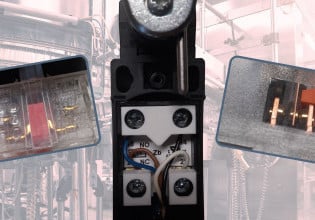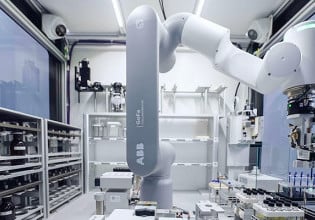ABB Launches New Condition-Based Maintenance Tool for Individual Robot Assessments
The new CBM from ABB uses real-time data to predict the likelihood and timing of mechanical or system based failure.
What is Condition-Based Maintenance (CBM)?
ABB offers a wide range of services that cover installation and commissioning, repairs, and spares/consumables. To broaden its support network, ABB recently released its new Condition-Based Maintenance or CBM service. The service adds to ABB’s array of services that help customers utilize their robotic systems.

ABB’s CBM tool. Image courtesy of ABB.
The service aims to decrease downtime and improve overall robotic efficiency through a more intelligent maintenance program. With improved maintenance routines, large-scale robotic operations can plan for downtime and reduce spare part inventory. This helps by saving robotic manufacturers money while increasing overall output.
The service takes data from a large number of robots in operation and uses the data to predict failures and necessary maintenance for robots that are using the service. With a large aggregate of historical data, guesswork in robotic maintenance and surprise failures can be greatly reduced.
ABB Launches New CBM
The new CBM from ABB utilizes real-time data to predict the likelihood and timing of mechanical or system based failure. This system helps to locate potential problems that could affect robotic performance. It uses data from individual robot speed, acceleration, and load duty.

ABB’s CBM tool. Image courtesy of ABB.
The ABB system then analyzes the robotic parameters and compares the conditions of each robot to ABB’s worldwide robotic database giving a more realistic maintenance schedule for robots under different conditions.
The system then creates a report to help customers decide what preventative measures to take, report is created from certain key elements on an individual robot basis. The report uses the robot’s serial number, data analysis, individual maintenance recommendations, rating of the systems, and conclusions.
From this, the customer can make more informed decisions on the proper action to take when moving forward with each specific robotic cell's maintenance routine.
The Importance of Condition-Based Maintenance
Condition-Based Maintenance has the power to save manufacturers from unforeseen downtime and can help to reduce the number of spare parts sitting in stock at the facility. The system helps to make manufacturers with large robotic fleets more efficient with their downtime, and allows for optimal timing on scheduled maintenance procedures, allowing manufacturers to plan for downtime when production is lower.
With CBM, manufacturers are able to more precisely predict system failures, with the help of ABB if needed. In the past, gearboxes and other mechanical units were prone to unpredicted failure. Without real-time data, it can be difficult to predict service intervals.
Robots working under lighter conditions may require less frequent service than those working under more demanding workloads. Knowing the appropriate time frame to change parts leads to more efficient use of resources and keeps unused spare parts to a minimum.

A robot from ABB demonstrating the new condition-based maintenance capabilities. Image courtesy of ABB.
The latest addition to ABB’s support arsenal has the potential to help large scale manufacturers in the search for increasing efficiency. With the use of real-time data, ABB can more accurately predict significant failures within their customer's robotic fleets.
Over time, as more data is collected, the system's accuracy should increase helping to improve the system over time. Having the ability to predict the likelihood and significance of robotic failure is a large step forward in the upkeep and longevity of robotic systems.







nice